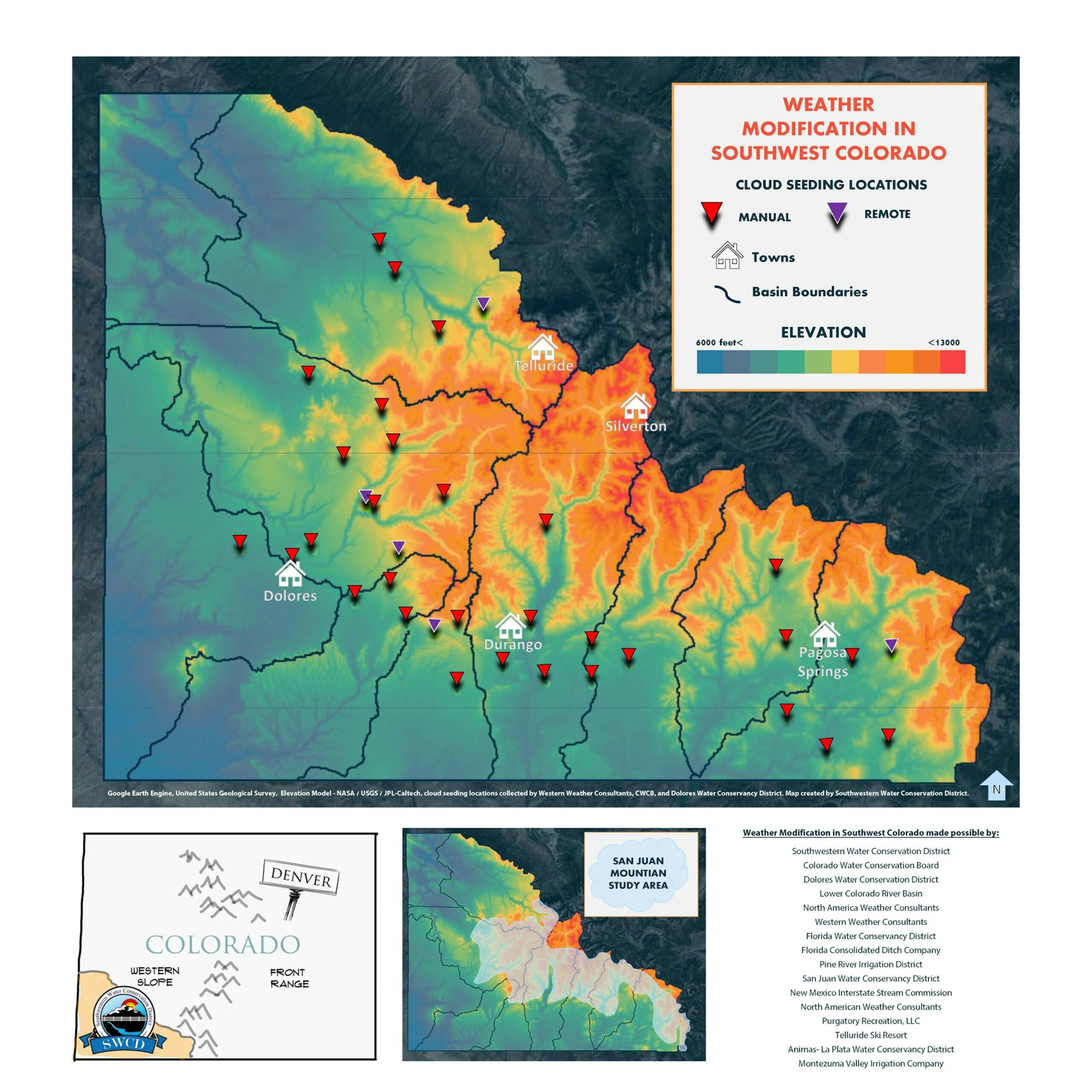Weather Modification
Weather modification, also known as cloud seeding, is designed to increase winter precipitation. Cloud seeding disperses substances into the air that serve as cloud condensation.
SWCD, along with the River District and the Upper Colorado River Commission, see weather modification as an opportunity to augment flows in the Colorado River basin as part of their broader drought contingency planning.

A 2014 study by the State of Wyoming is the most ambitious and expensive ever done on cloud seeding. It concluded that — despite several caveats and uncertainties — seeding in two Wyoming mountain ranges increased snowfall by 5 percent to 15 percent and raised stream flows by 0.4 percent to 3.7 percent. In a 2018 study by University of Wyoming and University of Colorado, researchers could see silver iodide enter the clouds and form snow crystals.

In southwestern Colorado, SWCD matches dollar for dollar (up to $90,000) funding from local partners including: Purgatory Resort, Telluride Ski and Golf, Florida Water Conservancy District, Florida Consolidated Ditch Company, the San Juan Water Conservancy District, the Pine River Irrigation District, Animas-La Plata Water Conservancy District, Montezuma Valley Irrigation District, and the Dolores Water Conservancy District. Funding is also provided by the Colorado Water Conservation Board, Lower Colorado River Basin water interests, and the state of New Mexico.
The Colorado Water Conservation Board administers the state’s cloud seeding program, issuing permits and providing funding. For more information, please visit their website. For a bit of history about cloud seeding in the United States, watch this video by the U.S. Bureau of Reclamation.
Watch this short video from the Durango Herald on southwestern Colorado’s program, see below:
